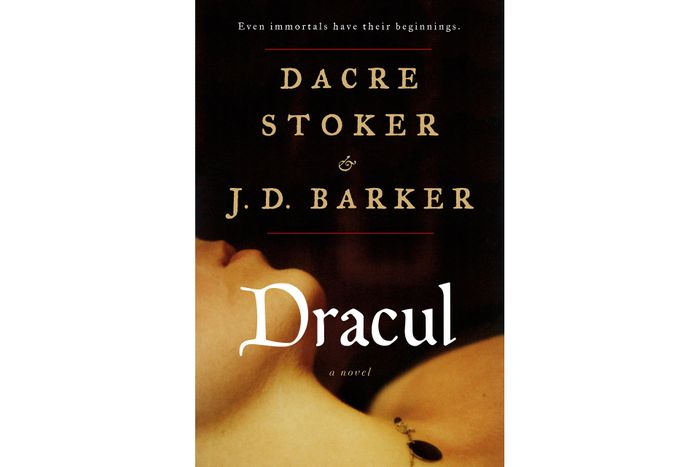
When Bram Stoker first gave his publisher a copy of the novel that introduced the world to his blood-sucking count, the author began the conversation with a startling claim: ÔÇ£This story is true.ÔÇØ In his original preface to the manuscript, discovered in the Icelandic translation of the novel, Stoker wrote: ÔÇ£I am quite convinced that there is no doubt whatever that the events here described really took place, however unbelievable and incomprehensible they might appear at first sight.ÔÇØ
Depending on your perspective, this contention is either a haunting mystery that demands unraveling or a clever bit of marketing. StokerÔÇÖs publisher, for his part, was apparently disturbed. He told Stoker he wouldnÔÇÖt publish the book, in part because he was based in London, where Jack the Ripper was still at large, and he was concerned that the claim would provoke mass hysteria. Ultimately, Stoker and his publisher compromised, and the writer agreed to cut most of the preface and some hundred pages of the manuscript itself.
In the years since, the count has traveled places that his creator (or biographer) surely never imagined. He has appeared in nearly 300 films ÔÇö a Guinness world record. He has visited space; he has sung opera; he has spawned mountains of academic research and also featured in more than a few pornographic films. Along the way, Stoker and his heirs lost control of the count. The fight for control began back in the 1920s, when StokerÔÇÖs widow sued the creators of Nosferatu, an unauthorized adaptation of Dracula, for copyright infringement. She won that battle but eventually lost the war ÔÇö Dracula entered the public domain in 1962. (Some intriguing elements of vampire lore date back to the fight over Nosferatu, including the motif that sunlight kills vampires ÔÇö Bram StokerÔÇÖs count was merely weakened by sunlight, and NosferatuÔÇÖs creators inserted the enduring tweak in a failed attempt to avoid infringement.)
In the last decade, though, a new Stoker has entered the fray and is keen to reassert his great-grand-uncleÔÇÖs startling claim. Author Dacre StokerÔÇÖs latest, Dracul, co-written with horror writer J.D. Barker and out this week, is a sort of prequel that purports to tell the story of BramÔÇÖs life before he sat down to write his classic work. Dracul is DacreÔÇÖs third entry into the world his ancestor created, and is on track to be his most famous, in part because director Andy Muschietti, of It, is already developing an adaptation. By following a trail of notes and letters Bram left behind, painstakingly collected in research archives around the country (and fished out of trunks in DacreÔÇÖs cousinÔÇÖs house), Dacre and Barker attempted to reconstruct the missing hundred pages of the manuscript and make the case, once again, that Count Dracula really lived. ÔÇ£We were on this mission to dig into the actual documents, and figure out what the genesis was for the manuscript,ÔÇØ Dacre explained in a recent phone call. ÔÇ£And we kept coming back to this one idea: that this story was true, that it had its basis in fact, that truth was stranger than fiction. So, we just took that and ran with it.ÔÇØ
Dacre didnÔÇÖt get into the vampire game until he was 45. When he was growing up in the suburbs of Montreal, he knew very little about his famous ancestor. Every Halloween, he wondered why the kids who came around would joke about whether the Stokers would hand out candy or take their blood. When he was 13, his father finally decided to tell him about the family legacy: He pulled down a first-edition copy of the 1897 volume. ÔÇ£We were not really aware of the following that Bram had,ÔÇØ Dacre said. His family didnÔÇÖt dwell on their forebearsÔÇÖ success. ÔÇ£My dad said, ÔÇÿBram did a great thing. Now you make your own name for yourself.ÔÇÖÔÇØ┬áDacre did ÔÇö at least within a very specific niche. In 1988, he coached the Canadian MenÔÇÖs Olympic pentathlon team to an 11th-place finish. (The sport involves equestrian jumping and pistol shooting.) He fared better coaching players of court tennis. Then, in 2003, a screenwriter and self-described ÔÇ£volcano of Dracula knowledgeÔÇØ named Ian Holt pitched the Stokers a sort of partnership. He had an idea for a sequel to the classic, and he wanted them to get behind it. He convinced Dacre to work with him on the book.
As the co-writer of a Dracula novel, Dacre had one obvious advantage. With his famous name, he found easy entry into the world of vampire scholarship and horror enthusiasts and began traveling the country, studying papers that his ancestor had left behind. In the process of researching Dracula: The Un-dead, a sequel set 25 years after the original, Dacre stumbled across what he describes as ÔÇ£the holy grail of Dracula stuffÔÇØ while he was digging through papers from the attic of BramÔÇÖs great-grandson ÔÇö BramÔÇÖs journal, the only one found to date. ÔÇ£It gave me a lot of insight into his thinking and his ideology,ÔÇØ Dacre said. So did his conversations with the great-grandsons. According to family lore, Bram could be a harsh parent: He taught his only child to swim by bringing him to the seaside and throwing him into the water. After teaming up with a historian to edit the journal heÔÇÖd discovered in 2012, Dacre wanted to return to fiction, and to a mystery that has haunted Dracula enthusiasts for years: the truncated preface and missing hundred pages of the original manuscript. Could those missing pages explain why Bram once told an interviewer that his story was based on both ÔÇ£mystery and factÔÇØ?
Dacre met J.D. Barker at the annual Horror Writers Association dinner and pitched him on the idea; heÔÇÖd read BarkerÔÇÖs debut, Forsaken, about the Salem witch trials and a journal that comes to life, and thought he might be able to work a similar magic on BramÔÇÖs story. Barker, whoÔÇÖd first read Dracula when he was 8 years old, did not have to be persuaded. ÔÇ£As soon as Dacre and I started talking, we knew thatÔÇÖs where the story we wanted to tell existed,ÔÇØ Barker told me. ÔÇ£What was cut from the book and why was it taken out?ÔÇØ They took to the archives with that question in mind and began to put together bits and pieces they thought could have plausibly found their way into those pages. Of particular interest to them was BramÔÇÖs mysterious illness, which kept him in bed for most of his childhood until he recovered, abruptly and miraculously, at the age of 7. Ten years later, he was a champion rugby player at Trinity college.┬áÔÇ£He was so very sick, and as a coach, I wondered about what the body must go through to become a champion athlete just a few years later,ÔÇØ Dacre said. ÔÇ£Was there some kind of blood doping happening? What if there was a vampire involved?ÔÇØ
The most critical piece of research they examined came from an odd source: Paul Allen, the co-founder of Microsoft and an ardent horror enthusiast. Allen bought the original typescript for Dracula at a private auction about a decade ago. (He also owns Jack NicholsonÔÇÖs ax from The Shining.)┬áAllen does not always grant requests to view his private collection, but after Dacre and Barker signed a nondisclosure agreement, he agreed to let the pair examine the typescript in a locked conference room in Seattle under the watchful eyes of two guards. Neither had any idea what to expect. They were able to confirm some basic facts ÔÇö the manuscript is, indeed, missing the first 102 pages. They saw notes written in the margins, lines crossed out, intriguing drawings. They told me that the bulk of the crossed out and deleted paragraphs in the rest of the manuscript referred back to the missing pages, but whatever fresh insights they gleaned from those observations are locked away behind Paul AllenÔÇÖs NDA. Still, they acknowledged that the full substance of those missing pages remains unknown. Dacre, for his part, may prefer it that way. ÔÇ£One-hundred-and-thirteen years later, there are still more discoveries to be made,ÔÇØ he said. ÔÇ£I like to joke, if Bram had written an autobiography, we wouldnÔÇÖt all be quite so interested today. He would have told us the answers.ÔÇØ
In the end, Dacre and Barker had to imagine what those pages might have contained. With only scraps of information to fill out the story of Bram StokerÔÇÖs past, they came up with a gothic tale of a sickly boy who is healed by a mysterious creature that is also his nanny. While the genre has long been drained of life and vigor by a thousand bites, this contribution will likely appeal to fans, if only because it will offer them an intriguing glimpse at the dark circumstances that may have led to the enduring creation. As for whether that creation was real, as Dacre put it, quoting Dracula, ÔÇ£There are mysteries which men can only guess at, which age by age they may solve only in part.ÔÇØ



